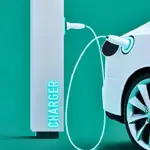Electric vehicles (EVs) are changing the way we think about energy, sustainability, and mobility. They are no longer merely a sci-fi fantasy; they are now a necessary component of the transportation system. The financial aspects of purchasing an EV become a crucial topic of discussion as the shift to cleaner transportation picks up steam.
Understanding EV financing is not only a step toward eco-conscious living but also an intelligent financial decision-making process. This guide delves deeply into the complexities of EV financing, offering insights that empower you to make informed, strategic choices.
The Rising Appeal of Electric Vehicles
In recent years, the global market has witnessed an undeniable surge in interest in electric vehicles. From their eco-friendly technology to long-term cost savings, EVs have become synonymous with innovation and responsibility. But why is this shift so significant?
Key Factors Driving EV Adoption:
- Environmental Impact: EVs produce zero tailpipe emissions, making them a cornerstone in the fight against climate change.
- Economic Incentives: Governments worldwide are offering attractive subsidies, tax benefits, and rebates for EV buyers.
- Technological Advancements: Improved battery technologies, longer ranges, and faster charging times are making EVs more practical and appealing.
- Market Trends: An expanding selection of EV models caters to diverse consumer preferences, from luxury sedans to affordable compact cars.
As the benefits stack up, more individuals are keen to explore the financial pathways to owning an EV. Let’s dive into the specifics.
Understanding the Basics of EV Financing
Purchasing an electric vehicle involves a series of financial considerations, ranging from upfront costs to operational expenses. While EVs may seem more expensive initially, they often deliver substantial savings over time. But how does one navigate the financing process?
Traditional vs. Specialized Financing Options
There are two primary routes for financing an EV:
- Traditional Auto Loans: These loans function similarly to those for conventional vehicles. Borrowers can secure funding through banks, credit unions, or dealerships, repaying the loan in monthly installments.
- Specialized EV Financing: Some institutions offer financing specifically tailored to EVs, often featuring lower interest rates, extended repayment terms, or bundled incentives such as home charging equipment installation.
Analyzing the Cost Components of EV Ownership
To fully grasp the implications of EV financing, it’s essential to break down the costs associated with ownership. Here’s a comparative overview:
| Cost Component | Internal Combustion Engine (ICE) Vehicle | Electric Vehicle (EV) |
|---|---|---|
| Purchase Price | Lower upfront cost | Higher upfront cost |
| Fueling Costs | Fluctuating and often expensive | Significantly lower (electricity) |
| Maintenance | Frequent (oil changes, engine repairs) | Minimal (fewer moving parts) |
| Insurance | Standard rates | Can be higher initially but decreasing |
| Resale Value | Depreciates faster | Growing demand increases resale value |
Government Incentives: Making EVs More Accessible
Governments play a pivotal role in making EV ownership financially feasible. Depending on your region, you may be eligible for the following incentives:
- Tax Credits: Federal or state tax credits can significantly reduce the overall purchase cost.
- Rebates: Direct cash rebates upon purchase or lease provide immediate savings.
- Exemptions: Some jurisdictions waive registration fees or tolls for EV owners.
- Infrastructure Support: subsidies for home charging stations enhance convenience and affordability.
“The road to sustainable transportation is paved with incentives and innovation.”
Leasing vs. Buying: Which Is Right for You?
One of the most critical decisions in EV financing is choosing between leasing and purchasing. Each option has distinct advantages, depending on your financial goals and lifestyle preferences.
Advantages of Leasing:
- Lower Initial Costs: Leases typically require smaller down payments and monthly installments.
- Flexibility: At the end of the lease term, you can switch to a newer model or opt-out.
- Technology Access: Leasing allows you to stay updated with the latest advancements.
Advantages of Buying:
- Ownership: Purchasing an EV gives you complete control over its use and resale.
- Long-Term Savings: Over time, owning an EV may be more economical than leasing.
- Customization: Ownership permits personal modifications, which leases generally restrict.
Innovative Financing Solutions for EVs
The evolving EV market has spurred financial institutions to introduce innovative solutions tailored to diverse consumer needs. Below are some noteworthy options:
- Green Auto Loans: Designed for environmentally conscious buyers, these loans often feature reduced interest rates.
- Battery Leasing: Some manufacturers separate the cost of the EV from its battery, allowing owners to lease the battery for a lower upfront price.
- Subscription Models: Offering the ultimate flexibility, subscription services provide access to an EV for a monthly fee that covers insurance, maintenance, and more.
- Employer Assistance Programs: Some companies partner with lenders to offer subsidized loans or benefits for employees transitioning to EVs.
The Role of Credit Scores in EV Financing
Just as with any significant purchase, your credit score will influence the terms of your EV financing. A higher score typically unlocks:
- Lower Interest Rates: Making monthly payments more affordable.
- Favorable Loan Terms: Longer repayment periods with manageable installments.
- Increased Negotiation Power: Strong credit positions you to secure better deals.
However, even with a modest credit score, there are avenues to explore. Many institutions offer financing solutions aimed at first-time EV buyers or those with non-optimal credit histories.
Practical Tips for Navigating EV Financing
Making a sound financial decision requires thoughtful planning. Here are some tips to guide your journey:
- Research Incentives: Familiarize yourself with all available rebates, credits, and subsidies.
- Compare Loan Options: Shop around for the best interest rates and repayment terms.
- Understand Total Costs: Factor in insurance, maintenance, and charging infrastructure.
- Seek Pre-Approval: Secure financing before visiting dealerships for stronger negotiation leverage.
- Evaluate Resale Value: Consider how demand for used EVs could impact your investment.
The Future of EV Financing
As the EV market matures, financing options are expected to become even more accessible and tailored. Key trends on the horizon include:
- Integration with Renewable Energy: Loans that bundle EV purchases with solar panel installations for sustainable charging.
- Blockchain-Based Financing: Leveraging technology for secure, transparent transactions.
- Dynamic Pricing Models: Real-time adjustments in loan terms based on driving habits and energy usage.
“Investing in an electric vehicle isn’t just buying a car; it’s committing to a cleaner, smarter future.”
Final Thoughts: Driving Toward Financial and Environmental Goals
The landscape of EV financing is as dynamic as the vehicles themselves, filled with opportunities to align personal financial goals with broader environmental values. By understanding the key components, leveraging available incentives, and exploring innovative solutions, you can accelerate your journey toward sustainable mobility.
As the adage goes, “Knowledge is power,” and when it comes to EV financing, it also means financial empowerment and environmental stewardship. So, are you ready to charge up your knowledge and hit the road toward a brighter, greener future?



